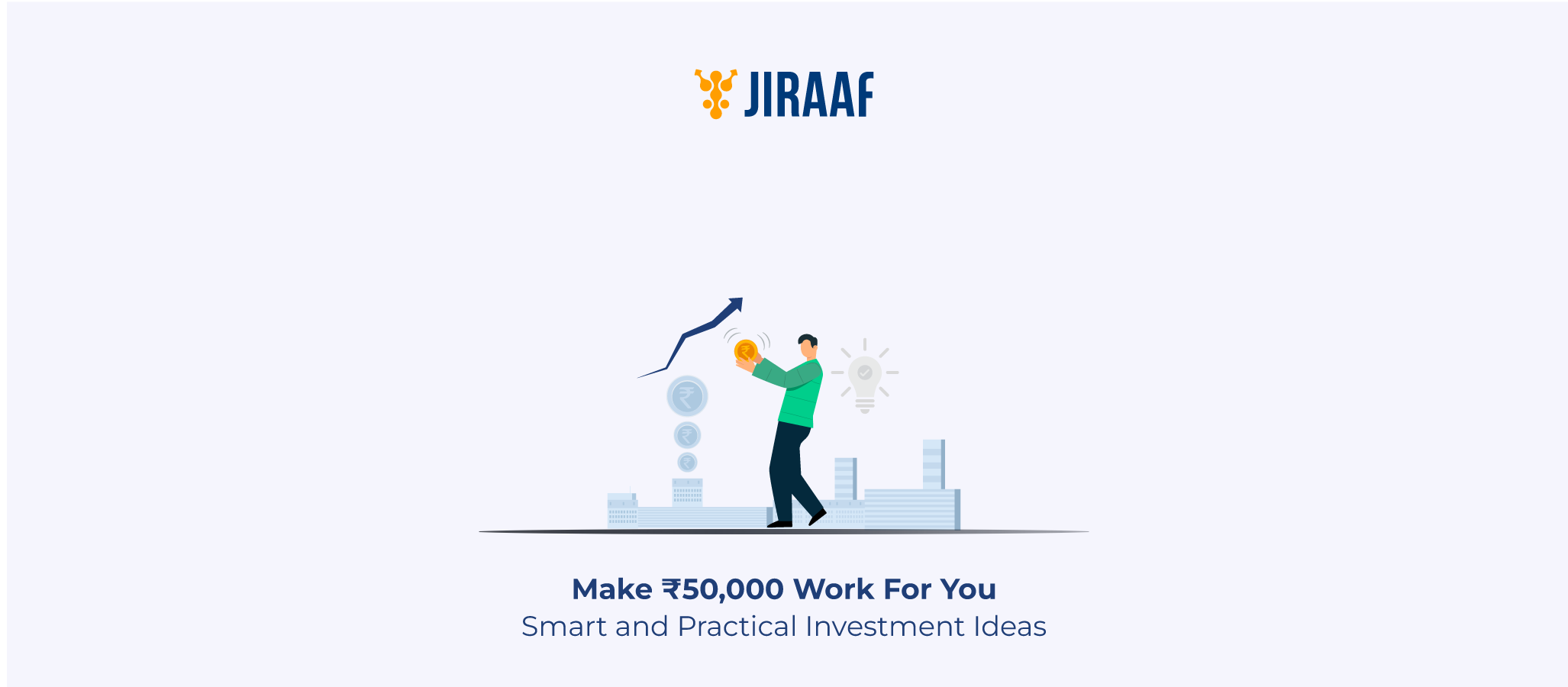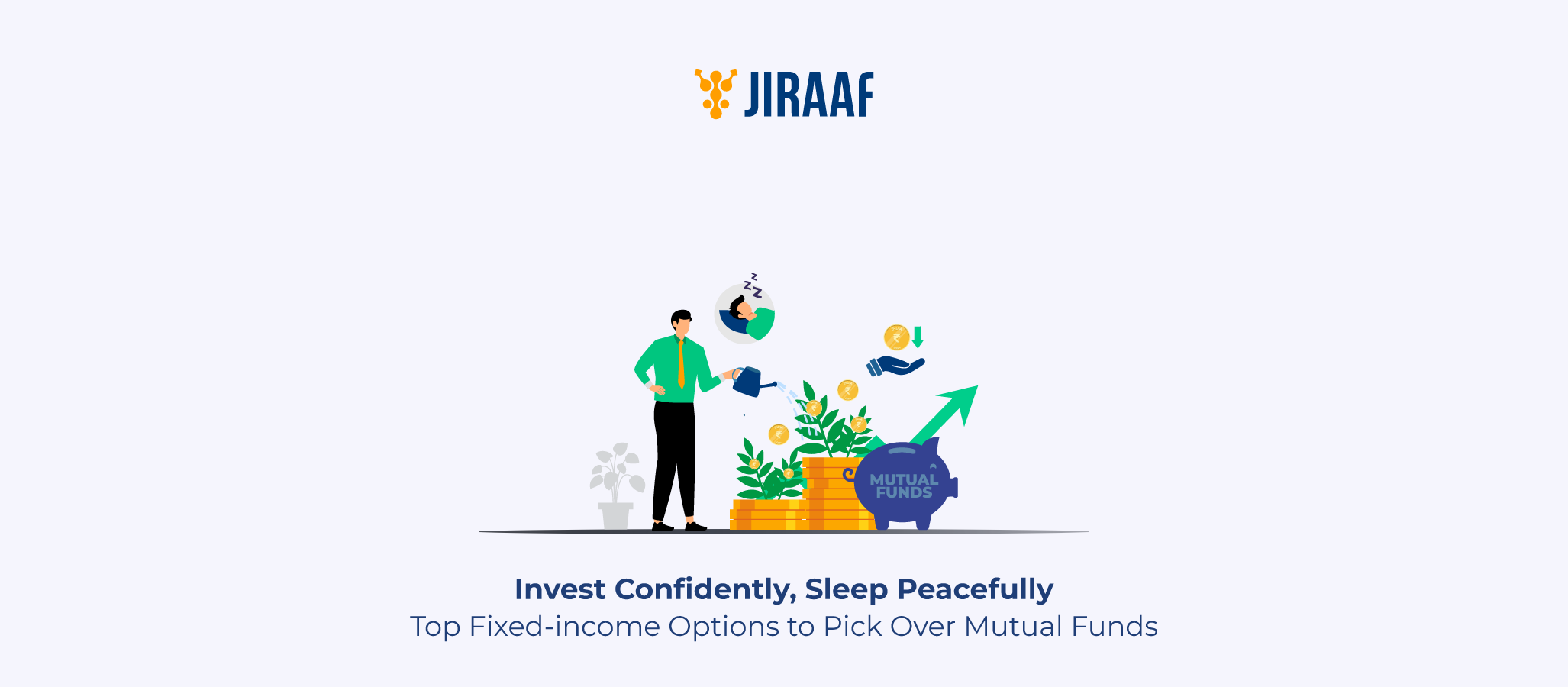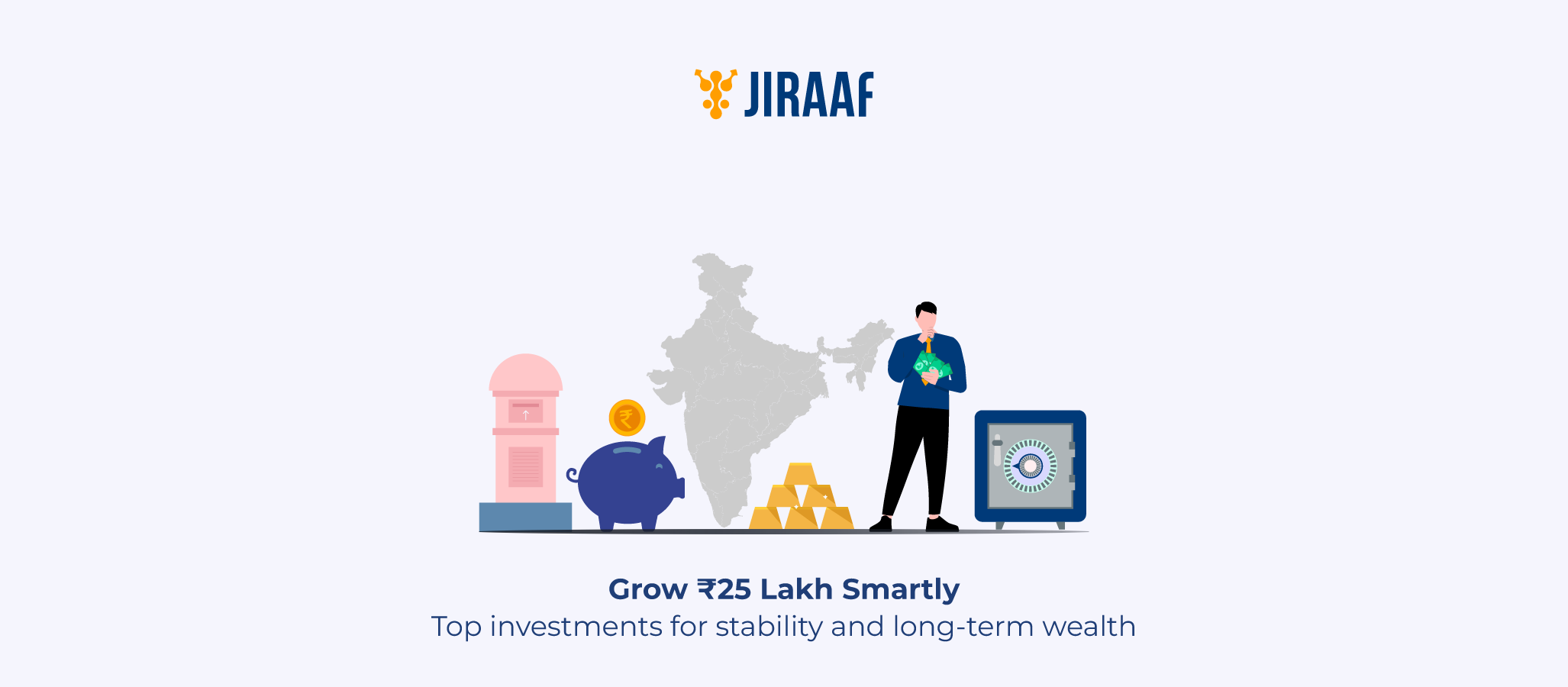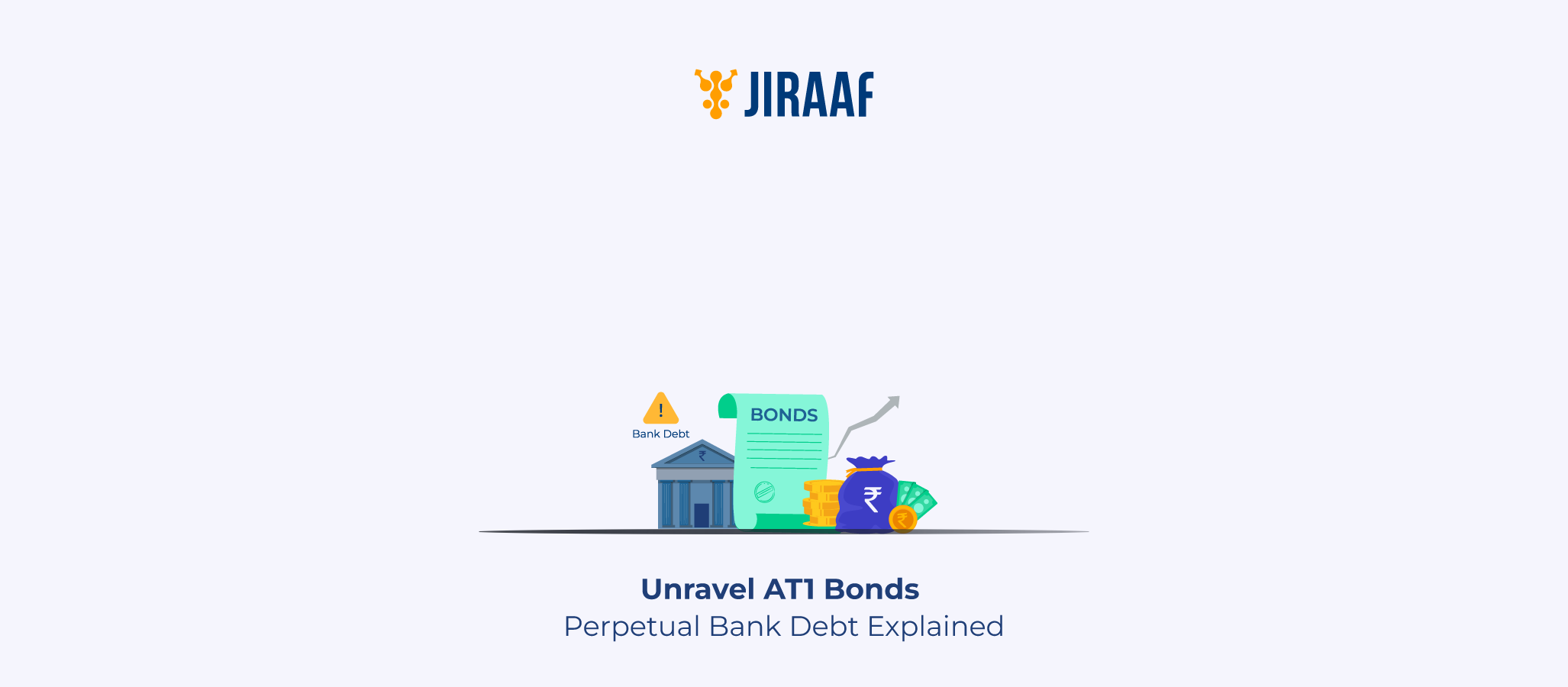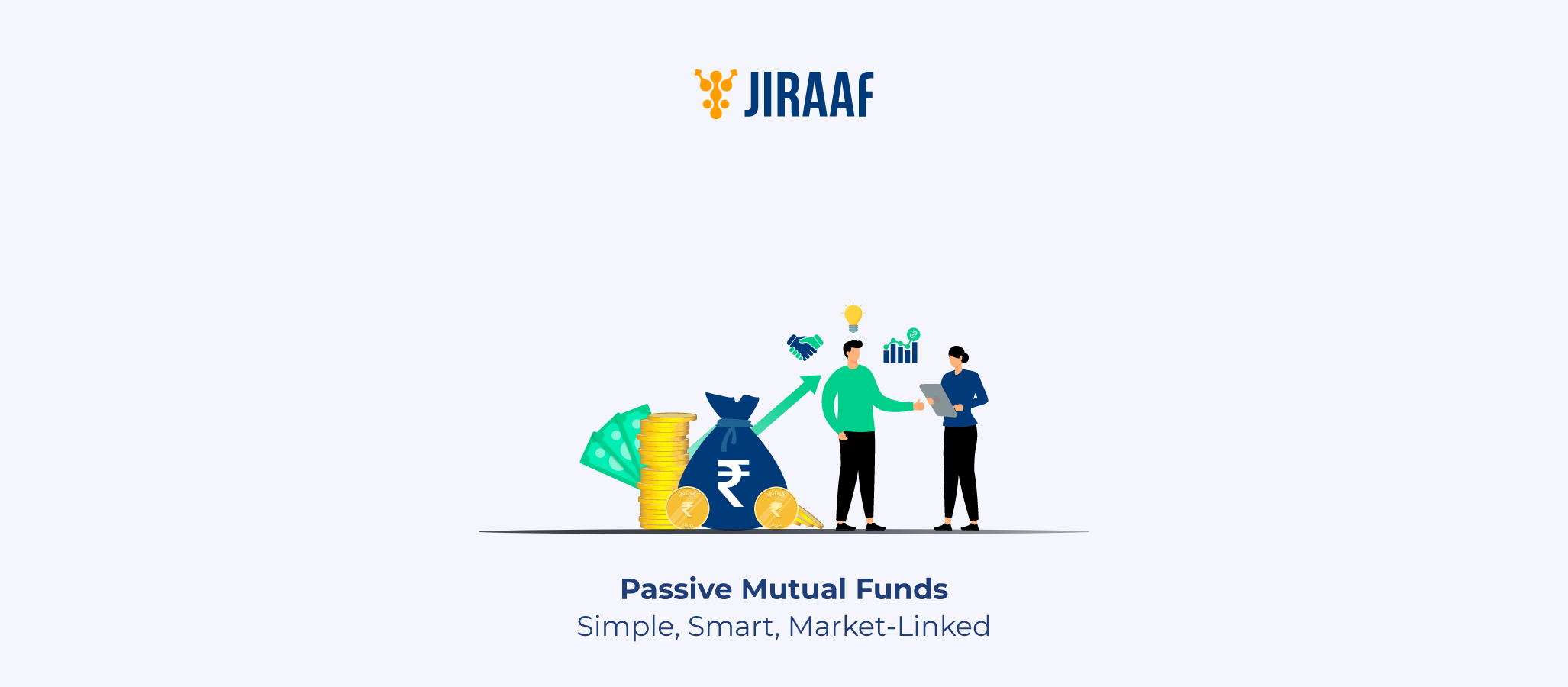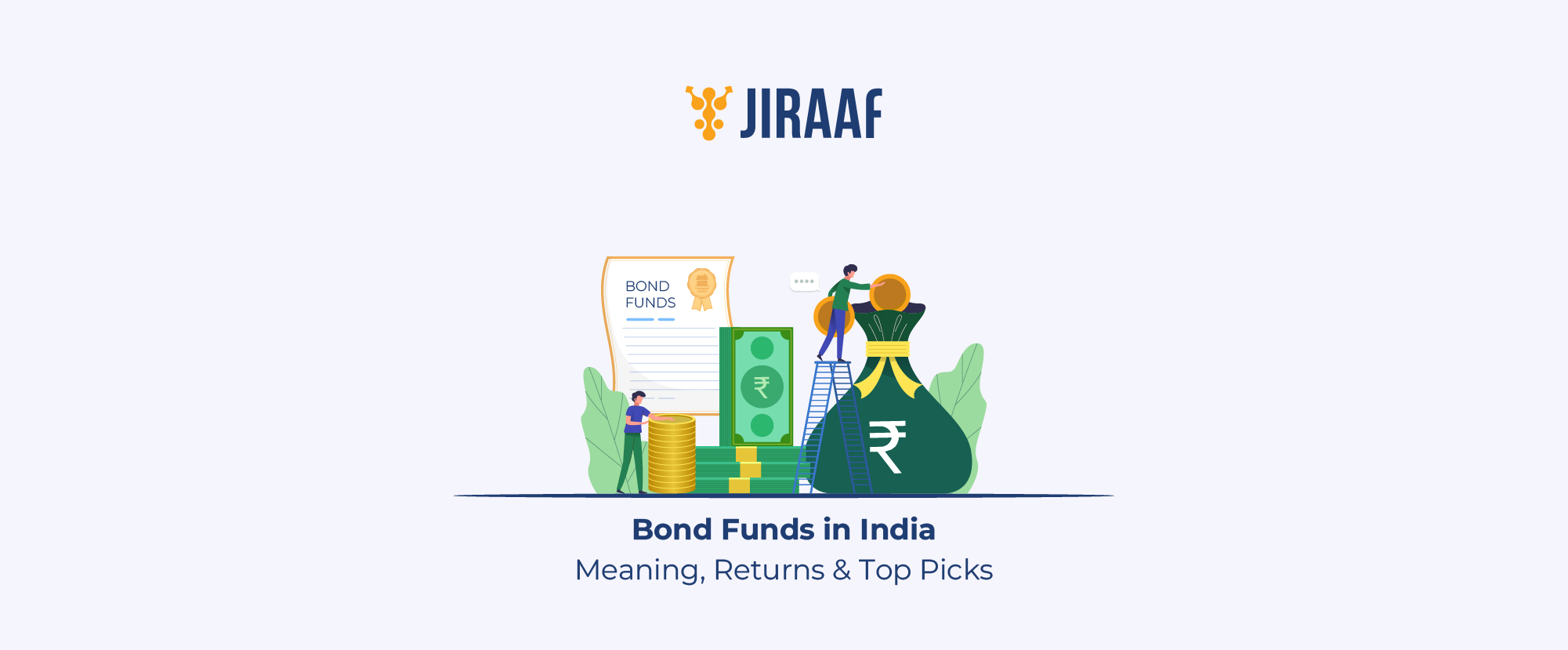₹50,000 may not be a massive sum, but it’s a solid starting point to build financial discipline and long-term wealth. If you have accumulated the amount and are now figuring out what instruments you can choose to get the best returns without facing too much risk, you’ve come to the right place. The thing to keep in mind though, is that the best option for you will be based on your goals, risk appetite, investment horizon, and other such priorities.
In this blog, let’s explore the top 5 smart investment options under ₹50,000 in India and how you can make the most of them.
Why ₹50,000 is a Good Starting Point for Investments
₹50,000 is a solid foundation to begin your wealth-building journey. This sum is large enough to put your money to work beyond a simple savings account, helping you beat inflation while still being manageable for first-time investors. It also strikes the right balance; you’re not risking too much capital, yet you’re committing enough to build the habit of investing. Most importantly, ₹50,000 allows you to diversify across different asset classes while keeping a buffer for emergencies, making it a practical and powerful starting point for any investor.
A sum of ₹50,000 may not feel huge, but it’s enough to begin shaping a portfolio.
Option 1: Mutual Funds & SIPs
Best for moderate-risk investors who want steady growth.
Mutual funds pool money from many investors and invest across stocks, bonds, and other assets. With ₹50,000, you can either invest as a lump sum or start a systematic investment plan (SIP) with as little as ₹500–₹1,000 per month.
Here are a few mutual fund types to consider:
- Large-Cap Funds: Invest in the top 100 companies. Safer, steadier, and suitable for beginners.
- Flexi-Cap Funds: Invest across large, mid, and small-cap stocks for a balanced approach.
- Small-Cap Funds: Higher risk but can deliver higher returns over long periods.
If you’re new, consider starting with a large-cap or flexi-cap fund to balance safety with returns. SIPs are especially effective because they average out market ups and downs, reducing risk.
Option 2: Fixed Deposits (FDs) & Recurring Deposits (RDs)
Best for conservative investors seeking safety and assured returns.
Fixed Deposits (FDs)
- With ₹50,000, you can invest in a lump sum FD with a bank or NBFC.
- Current interest rates range between 2.50% –8% depending on tenure and institution.
- FDs are ideal if you want guaranteed returns with no market risk.
You can also explore modern platforms like Jiraaf, which offer alternative FDs opportunities with better returns than traditional bank FDs.
Recurring Deposits (RDs)
- Perfect if you prefer investing small amounts monthly instead of a lump sum.
- Works like an SIP in a bank setting, with tenures ranging from 6 months to 10 years.
- Useful for short- to medium-term goals like travel, festivals, or small purchases.
- RD interest rates range from about 3% to 8.5%, depending on the bank.
FDs and RDs may not deliver the highest returns, but they score high on safety and stability.
Option 3: Stock Market Investments
Best for high-risk investors aiming for long-term growth.
Investing directly in stocks can potentially multiply your ₹50,000—but it comes with volatility and risk. If you’re considering equities, keep these three principles in mind:
- Diversification: Spread across sectors like banking, IT, pharma, and FMCG. Don’t put all your money in one or two stocks.
- Risk Appetite: Stock prices can fluctuate daily. Be prepared for ups and downs.
- Time Horizon: Stocks deliver the best results when held for 5–10 years or more.
For beginners, starting with blue-chip companies or index ETFs is safer than jumping directly into small-cap stocks. Over time, as you gain experience, you can take calculated risks in mid-cap and small-cap companies.
Option 4: Gold & Digital Gold
Great for both traditional and modern investors.
Gold has been a trusted store of value in India for centuries. With ₹50,000, you can invest in two different ways:
Lump Sum Investment
- Digital Gold, ETFs, or Gold Mutual Funds allow you to invest without worrying about storage. SGBs (now discontinued) also offer 2.5% fixed annual interest in addition to gold price returns and are government-backed.
Gold SIPs
- Many platforms let you buy gold in small monthly installments.
- Works like a mutual fund SIP, helping you average out price fluctuations.
If your goal is wealth preservation and diversification, digital gold or ETFs are smarter choices than physical gold.
Option 5: Government Schemes & Bonds
Perfect for risk-averse, long-term investors.
Government-backed schemes offer safety and predictable returns, making them ideal if you’re conservative with money. Popular options include:
- Public Provident Fund (PPF): 15-year maturity, tax benefits under Section 80C, interest rate ~7.1%.
- National Savings Certificate (NSC): 5-year maturity, fixed returns, also eligible for tax deduction under 80C, interest rate ~7.7%.
- Government Bonds: Secure and predictable, suitable for diversification.
These are best suited for those who want capital protection with steady long-term growth.
But safety isn’t the only call to make. Before you lock in a choice, think about how long you’re willing to stay invested. That time frame—short or long—will shape every other decision.
Short-Term vs Long-Term Investment Strategy
When you plan to invest ₹50,000, your timeline matters as much as the investment option itself. Short-term strategies focus on safety and liquidity, while long-term strategies emphasize growth and wealth creation. Here’s a quick comparison:
| Aspect | Short-Term Strategy (1–3 Years) | Long-Term Strategy (5+ Years) |
| Primary Goal | Preserve capital, meet near-term expenses | Build wealth, achieve major life goals |
| Suitable Options | Fixed Deposits, RDs, Liquid Mutual Funds | Equity Mutual Funds, Stocks, PPF, Gold ETFs |
| Risk Level | Low; focus on safety and liquidity | Moderate to High; accepts short-term volatility |
| Returns | Stable but relatively lower (~3–8%) | Potentially higher (10–15%+ over time) |
| Liquidity | High; easy to withdraw when needed | Low to Medium; longer lock-in or better with patience |
| Investor Profile | Cautious investors, emergency savers | Growth-focused, disciplined investors |
Short-term investments give you safety and quick access to funds, while long-term investments reward patience and discipline with higher returns through compounding. The right choice depends on your goals and how long you can keep your money invested.
Before wrapping it up, it helps to pull the lens back. How do these choices fit together, and which path feels right for your own ₹50,000 journey? Let’s weigh it.
Final Thoughts: Choosing the Best Investment Plan for ₹50,000
Investing ₹50,000 in India opens multiple opportunities, from the safety of fixed deposits and government schemes to the growth potential of mutual funds, stocks, and gold.
The choice depends on your financial goals, time horizon, and risk appetite—conservative investors may prefer FDs, RDs, or PPF, balanced investors can explore mutual funds, and those with higher risk tolerance may consider equities.
What truly matters is taking the first step and committing to invest, because even a modest amount like ₹50,000 can become the foundation of long-term financial independence if you manage with discipline and patience.
